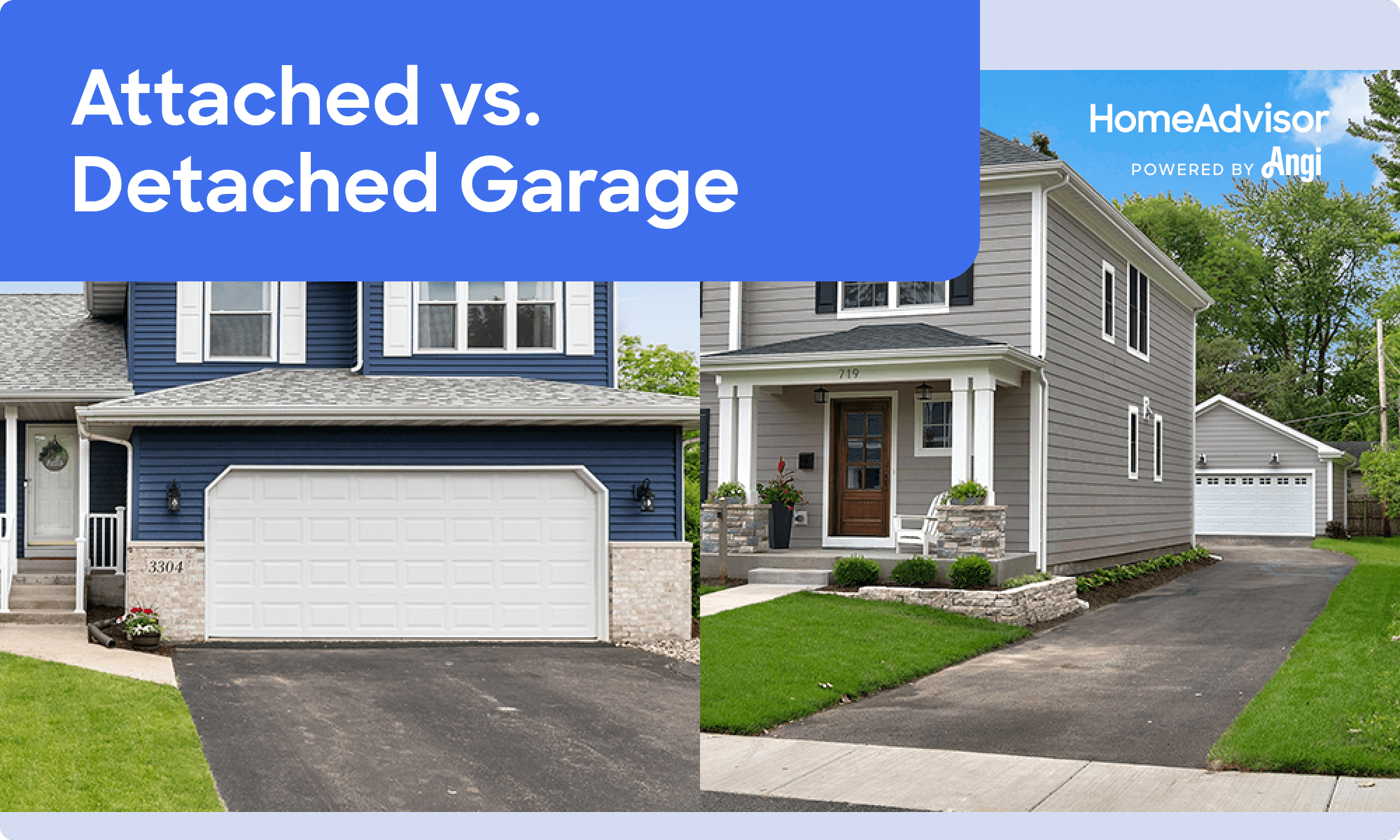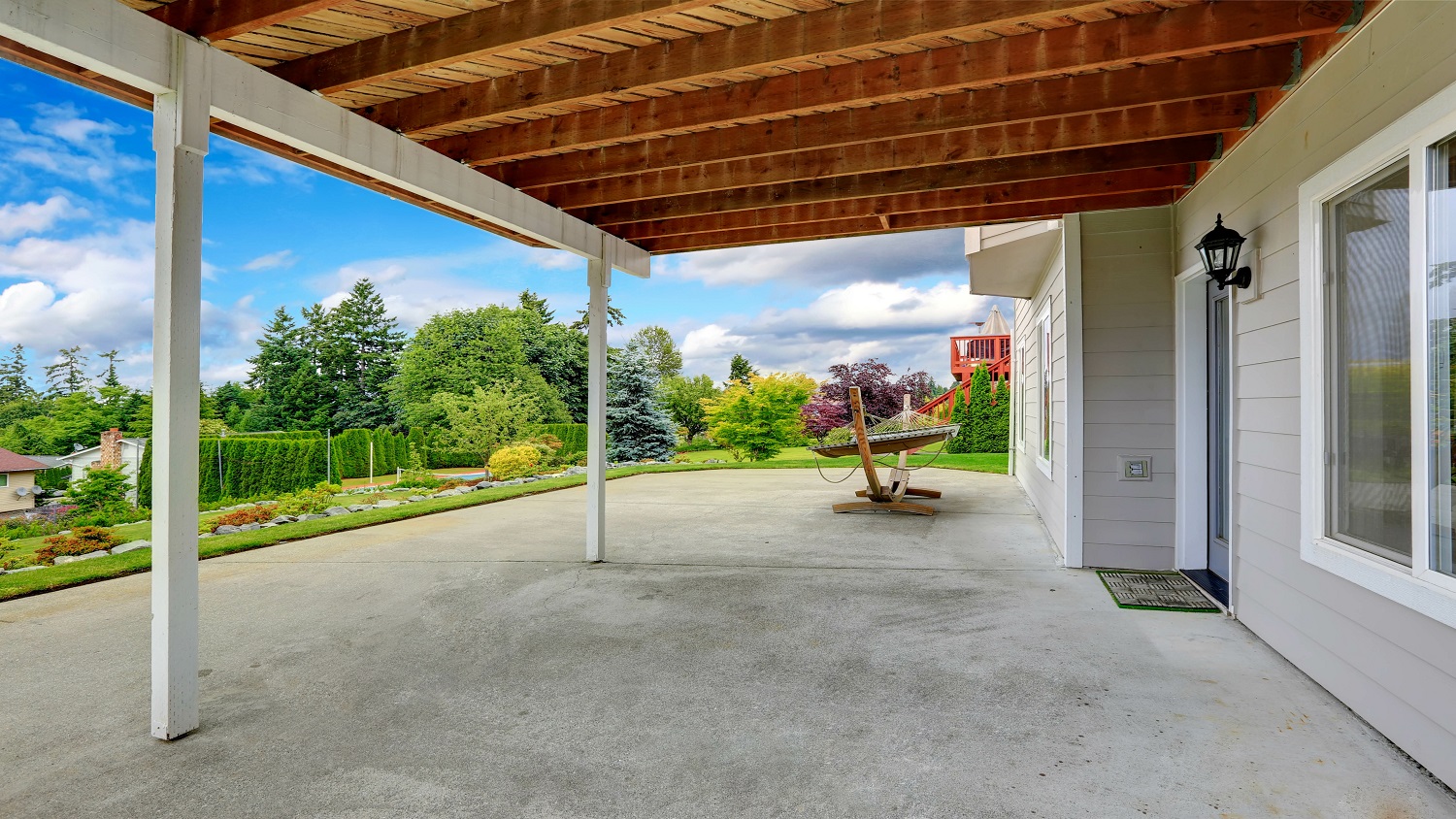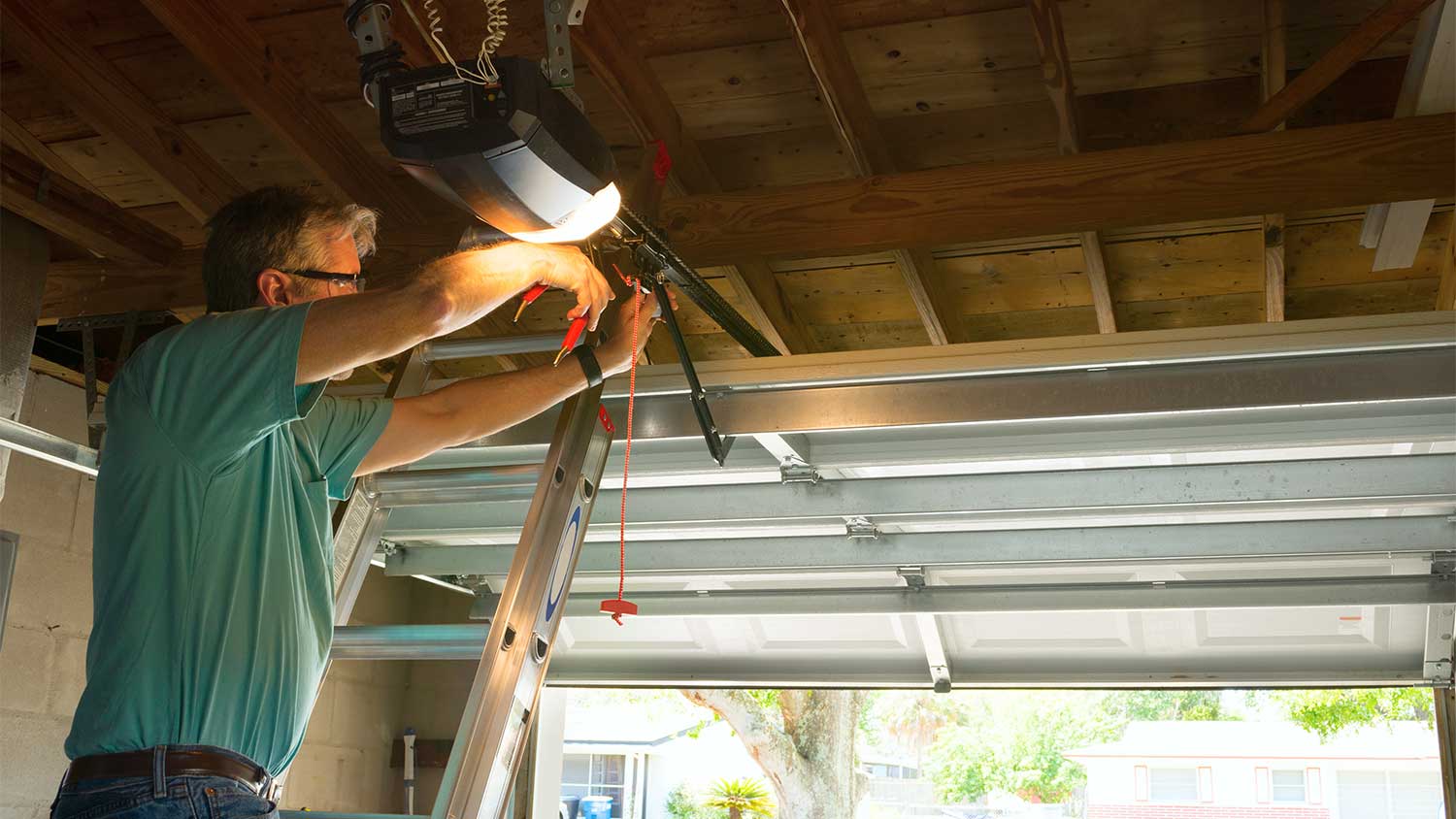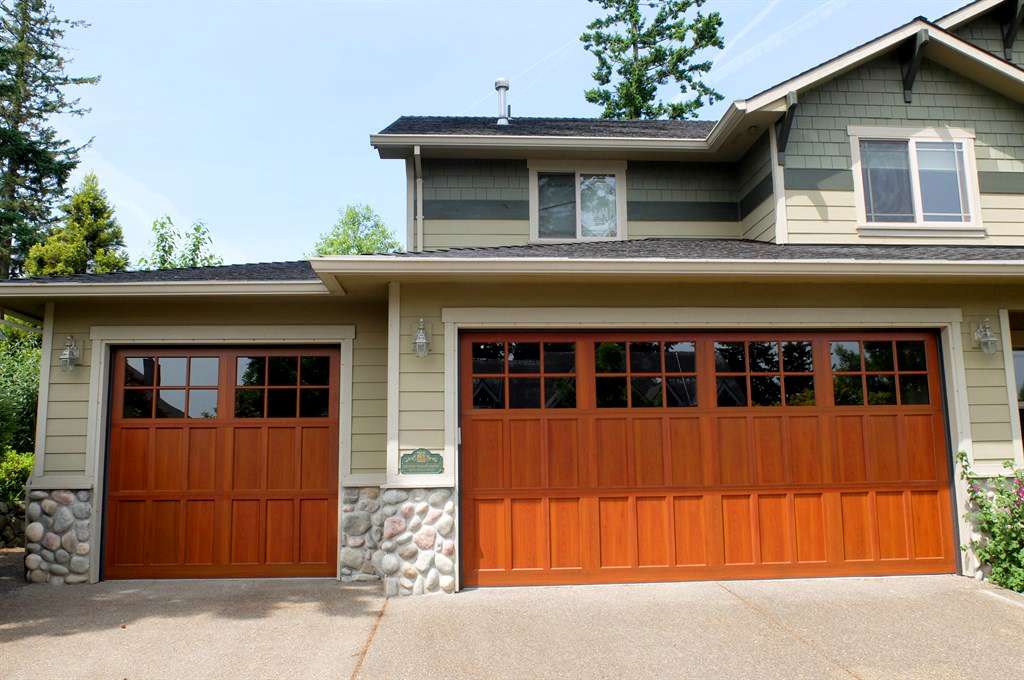
Need to replace your garage door? Here’s how much it costs, what factors affect cost, and what to expect.
The cost of building a garage averages $29,519, but overall costs depend on the size, materials, and whether you include a living space like an apartment.


Building a garage costs between $16,799 and $42,240, depending on the size, finishings, and extra features.
Building a detached garage is more expensive than an attached garage or prefab garage kit, but they have a higher ROI.
Add-ons, including windows, larger doors, or living space above the garage, significantly increase the price.
Labor is a major cost driver in building a garage, accounting for between 50% and 70% of the final cost.
You can reduce the cost of building a garage by avoiding extra features, opting for an attached garage, and building in the fall instead of spring or summer.
This article was updated using automation technology and thoroughly reviewed for accuracy by HomeAdvisor Editor Ryan Noonan.
Building a garage costs an average of $29,519, with most homeowners spending between $16,799 and $42,240. Costs can go as high as $140,000 for a fully-finished detached garage with RV parking. Factors like size, garage type, labor rates, materials, and permits influence the final price. Additional features, such as security systems and windows, also increase costs.
Understanding these garage building cost factors will help you budget effectively for your project.
The size of your garage significantly impacts the cost. Expect to pay around $50 per square foot on average if you hire a pro. Prices range from $30 per square foot for basic, attached garages and as much as $120 per square foot for the cost of installing a detached garage.
| Garage Size (Square Feet) | Average Cost |
|---|---|
| 12x20 | $7,200–$28,800 |
| 18x20 | $10,800–$43,200 |
| 20x20 | $12,000–$48,000 |
| 20x22 | $13,200–$52,800 |
| 22x22 | $14,500–$58,100 |
| 32x22 | $21,100–$84,500 |
| 32x34 | $23,00–$92,200 |
Garage size is also impacted by the type of garage and the layout. Here are some examples of different types:
One-car garage: $10,500–$27,000
Two-car garage: $15,000–$40,000
Three-car garage: $28,000–$57,000
Prefab metal garage kit costs (excluding labor and permits): $4,000–$11,000
Fully-finished detached garage (with space for multiple cars or a living area): Up to $140,000
Several materials are required to complete your new garage build.
| Material Type | Average Cost |
|---|---|
| Foundation | $2,000–$7,000 |
| Framing | $10 per sq. ft. (timber), $10–$35 per sq. ft. (concrete) |
| Interior Walls | $4–$17 per sq. ft. |
| Roof (all-in) | $4–$11 per sq. ft. |
| Gutters | $4–$40 per linear foot |
| Siding | $3–$11 per sq. ft. |
| Ceiling | $1.80–$10 per sq. ft. |
| Insulation | $1,900–$7,700 (or $4,700 on average) |
One of the main cost factors of building a new garage is labor. This is a large project that normally requires several workers to complete. For the garage building itself, expect labor to make up between 50% and 70% of the overall expense. Labor costs range from $20 to $50 per square foot, reflecting the skilled work required.
Additionally, the availability of skilled professionals and local demand can affect pricing.
General contractors oversee the entire construction process, coordinate with subcontractors, and ensure the project stays on schedule. Hiring a general contractor costs between 10% and 20% of the total project cost.
Electricians install wiring, lighting, and electrical outlets in the garage. They charge an average of $50 to $100 per hour, with total costs varying with the complexity of the electrical work. You’ll need a licensed electrician to do this work as doing it yourself is dangerous.
If you plan to have running water in your garage, a plumber is necessary to install water lines and fixtures. Plumbers charge approximately $45 to $200 per hour, depending on the region and the scope of the work.
Location plays a major role in labor and material costs for building a garage. Your garage will cost more in areas with a higher cost of living because they have higher labor rates. Since you’ll be working with a number of professionals (builders, plumbers, electricians, etc.), your location can increase costs across the board. Building a garage in a more remote or hard-to-access area also increases costs.
Beyond the basic cost factors, there are several extra and optional costs to consider when building a new garage.
In most cases, you’ll need to acquire building permits before construction can begin on your new garage. Permit prices vary by location but range between $1,200 and $1,500. Check the local requirements where you live and ask your contractor if they will be obtaining the permits.
Your garage will store your vehicle and other valuable possessions, so it's a good idea to install a security system for protection, including alarm systems, flood lights, and security cameras. Depending on the system, this can add anywhere from $300 to $1,200 to the final cost of your garage. Security cameras alone can cost up to $2,000, and choosing a garage door that works with your security system adds another $200 to $4,000 to the project’s total cost.
Windows and doors are optional additions that can make your garage feel more inviting. Depending on the style and placement, window installations cost between $300 and $2,500 per window. Skylights are another option, costing around $1,600 to $2,400 to install.
If you have a detached garage, it technically only needs the garage door to allow vehicles and people to come in and out. However, if you’re building an attached garage or simply want a smaller door to enter and exit from, it will add around $200 to the project's final cost.
A one-car garage door costs between $600 and $1,500, while double-width doors cost between $800 and $3,500. If you want a custom-built door to go with a custom garage, you’ll pay a minimum of $1,000.
These prices don’t factor in the cost of an automatic garage door opener, which costs between $220 and $520, including installation and parts. If you choose to add an automatic locking feature, this will increase the cost by an additional $100 to $300.
If you plan to create livable space in your garage, whether for an apartment, workshop, or lounge area, consider running an HVAC system to the building from your home. Extending HVAC ductwork from your home to a garage costs about $15 per linear foot.
The finishing touches for your garage will depend on your needs. Beyond utilities, there are other garage remodel costs to consider. You can pay to have the garage’s interior painted, have flooring and trim installed, or construct an entire living space on the level above. These add-ons contribute significantly to the final cost of your new or remodeled garage.

Building a garage can increase your home's value, and you can expect a 60% to 70% return on investment when selling your home—which may exceed 80% if the garage includes or is converted into livable space. However, prefabricated detached garage kits may not add value and could even decrease it. On the other hand, custom-built or attached garages substantially enhance your home's value.
Building a garage is a significant investment that increaess your home's value and adds functionality. Here are ways to make your project more budget-friendly while maximizing ROI:
Opt for a prefabricated garage kit if you need basic storage, but remember that it won’t add as much value as a custom-built garage.
Consider designs like an open-air carport that costs less than a fully enclosed garage but offers a lower ROI.
Build an attached garage when possible as it’s more cost-effective and still boosts your home's value.
Skip non-essential features like electrical hookups or insulation to save costs.
Schedule your project in the fall, when labor rates are lower.
Obtain multiple quotes from garage builders in your area to ensure the best value.
No place is more important than your home, which is why HomeAdvisor connects homeowners with local pros to transform their houses into homes they love. To help homeowners prepare for their next project, HomeAdvisor provides readers with accurate cost data and follows strict editorial guidelines. We surveyed thousands of real customers about their project costs to develop the pricing data you see, so you can make the best decisions for you and your home. We pair this data with research from reputable sources, including the U.S. Bureau of Labor Statistics, academic journals, market studies, and interviews with industry experts—all to ensure our prices reflect real-world projects.
From average costs to expert advice, get all the answers you need to get your job done.

Need to replace your garage door? Here’s how much it costs, what factors affect cost, and what to expect.

Wondering who seals concrete? Learn who to hire, when DIY makes sense, and how pros seal driveways and garage floors—start your search now

Wondering who to hire for garage door repair or installation? See when to call a garage door installer or technician and what to ask.

Discover who to hire to build a garage. Learn whether to hire a general contractor or garage builder, what to expect, and how much it costs.

Keep your home safe and secure with these garage door repair and maintenance tips.